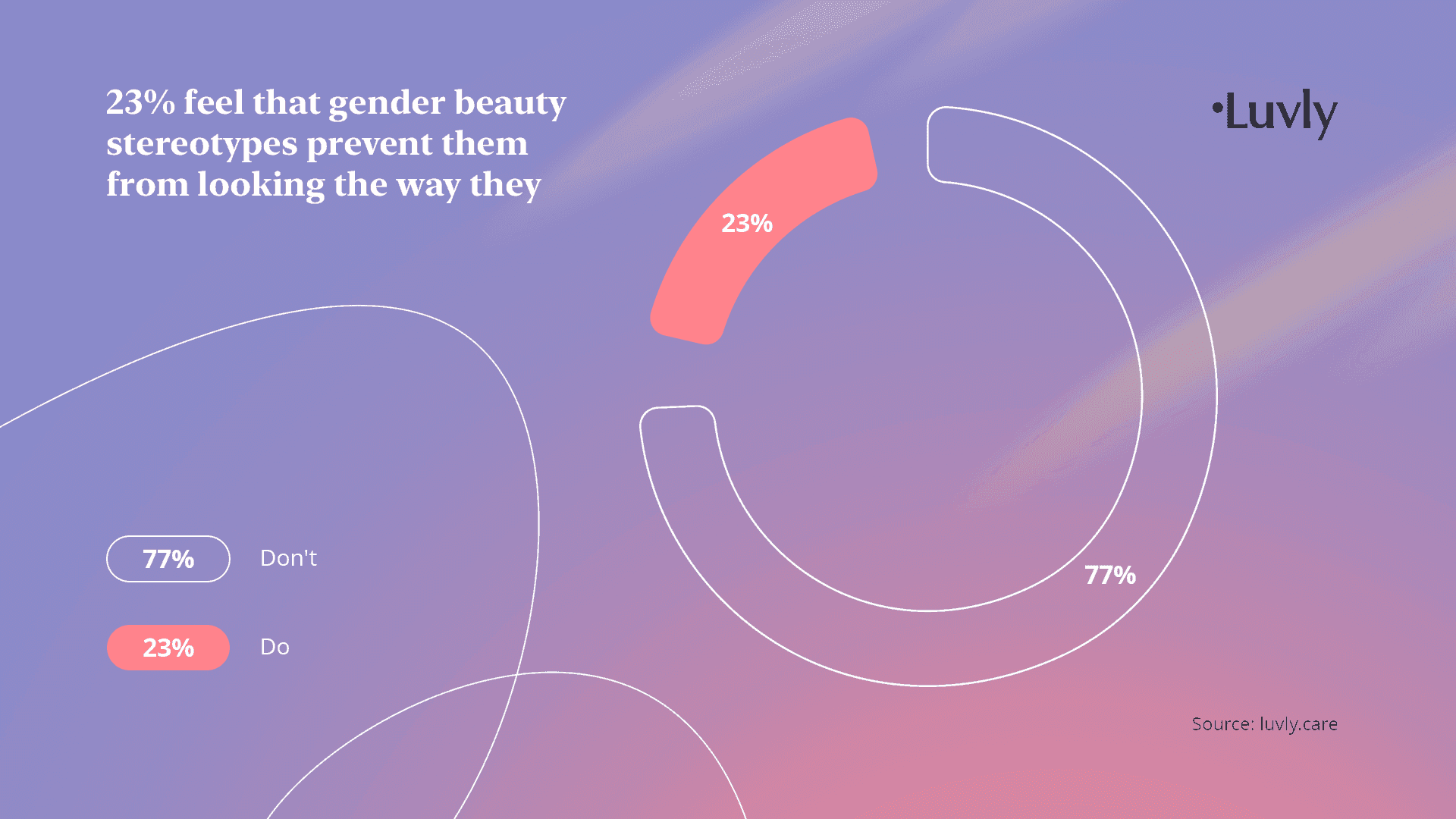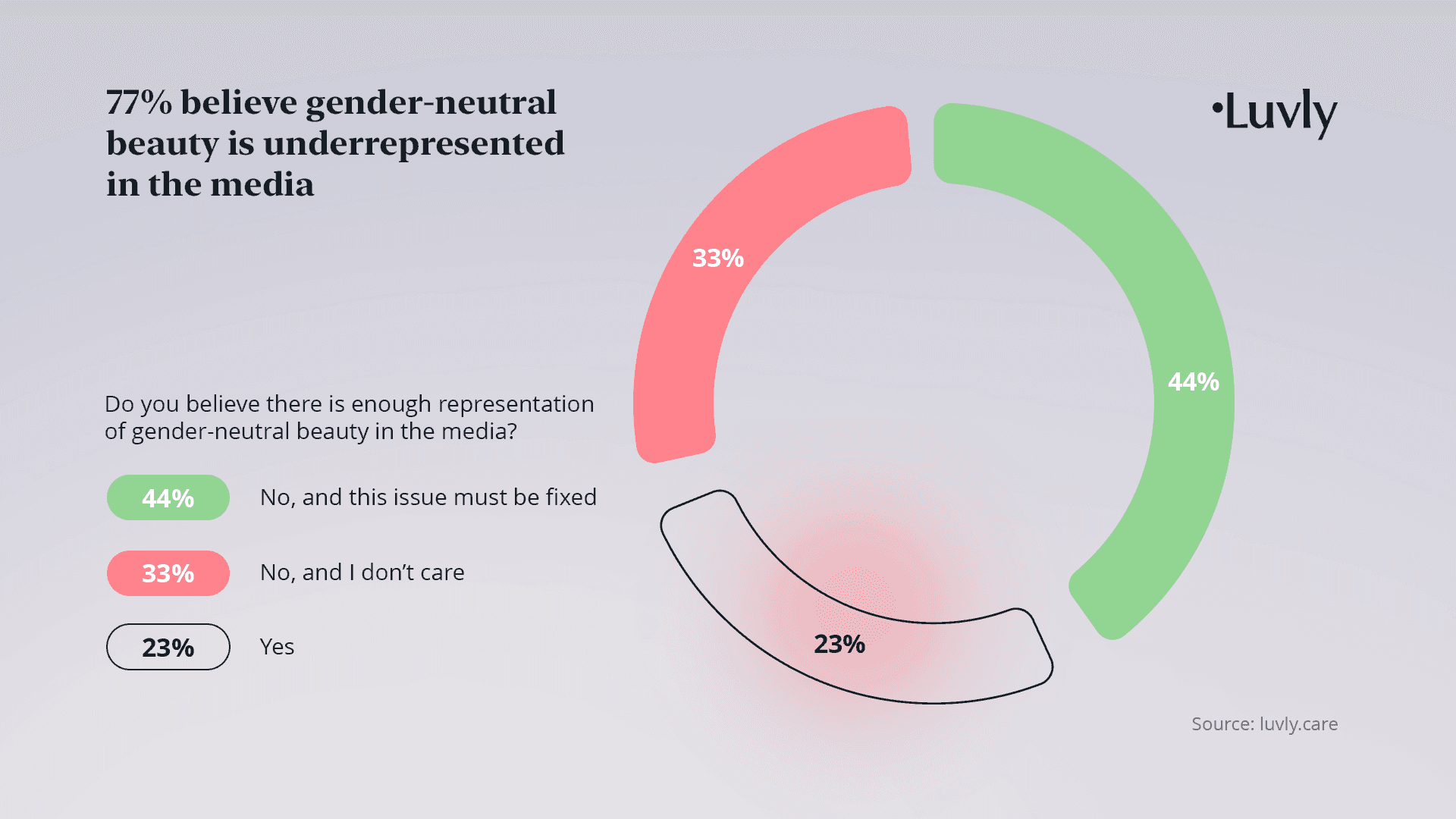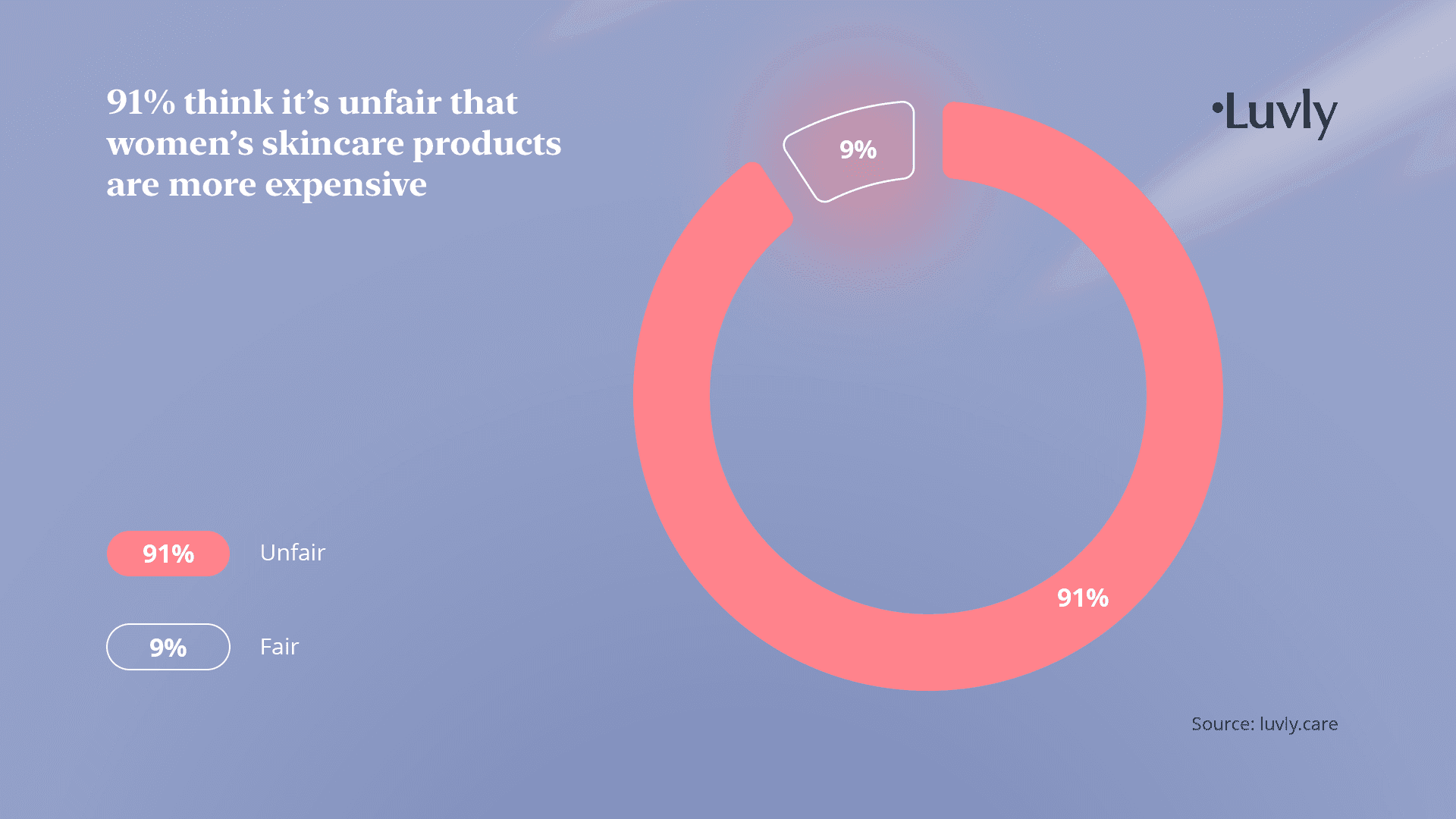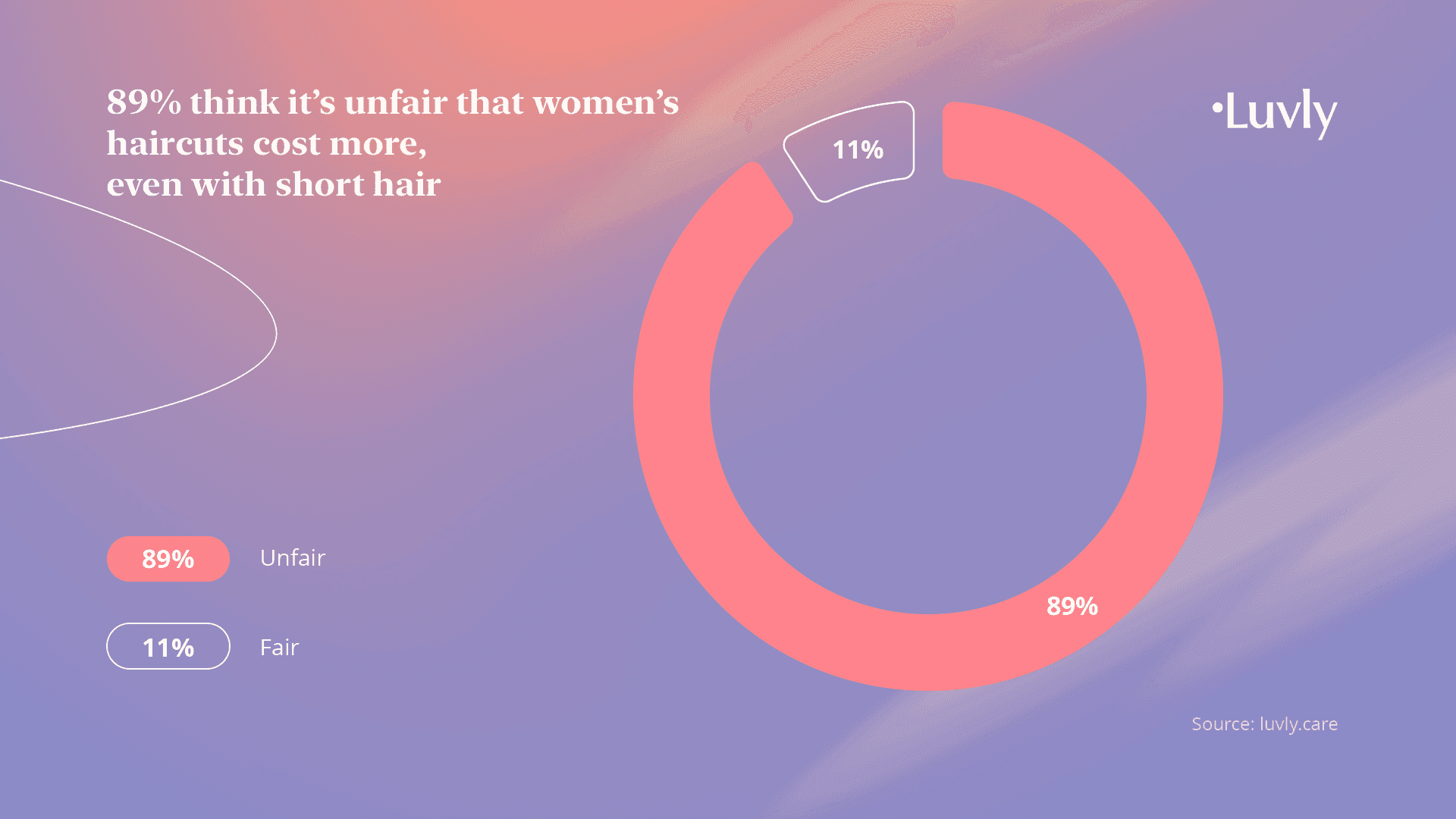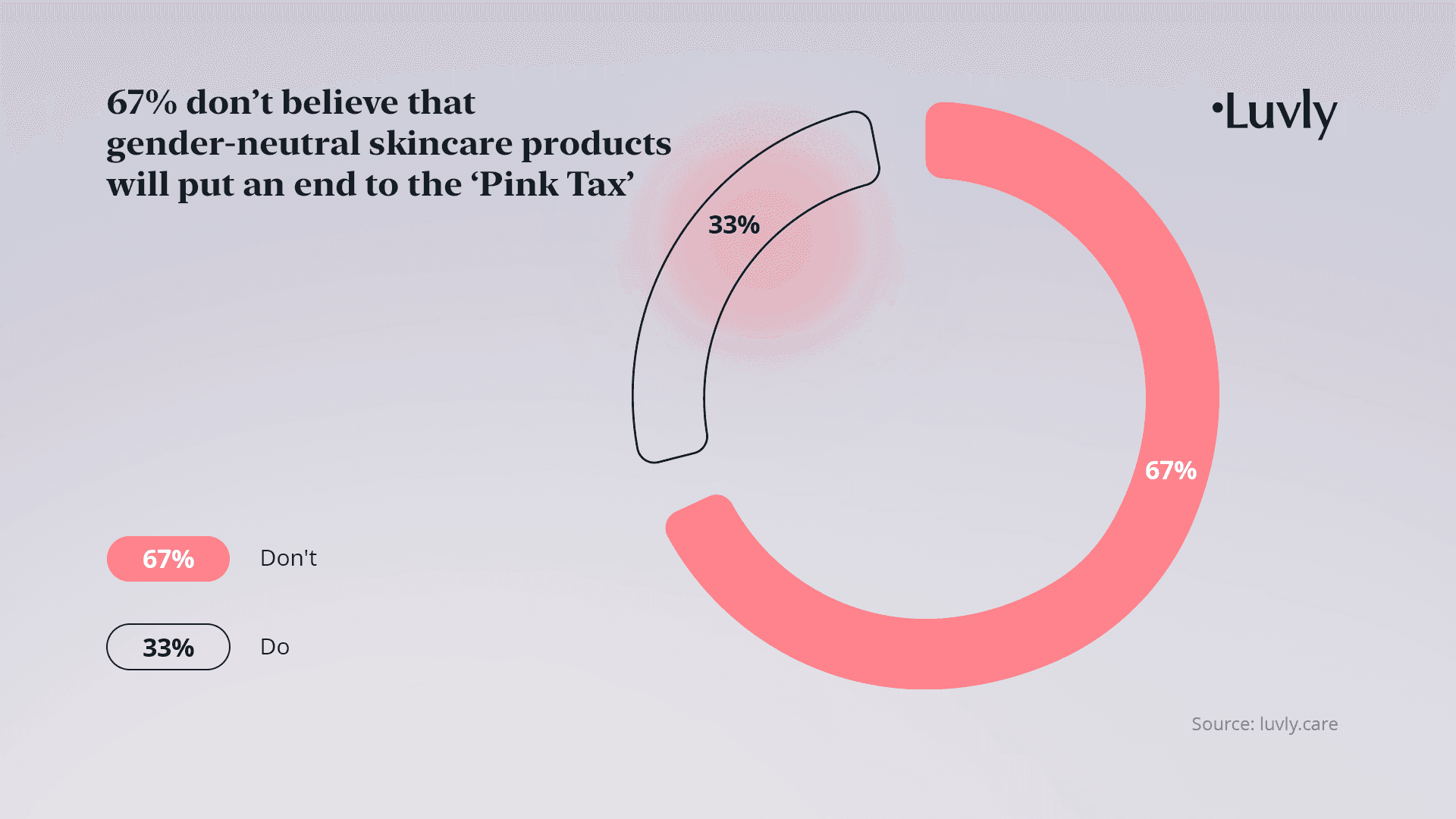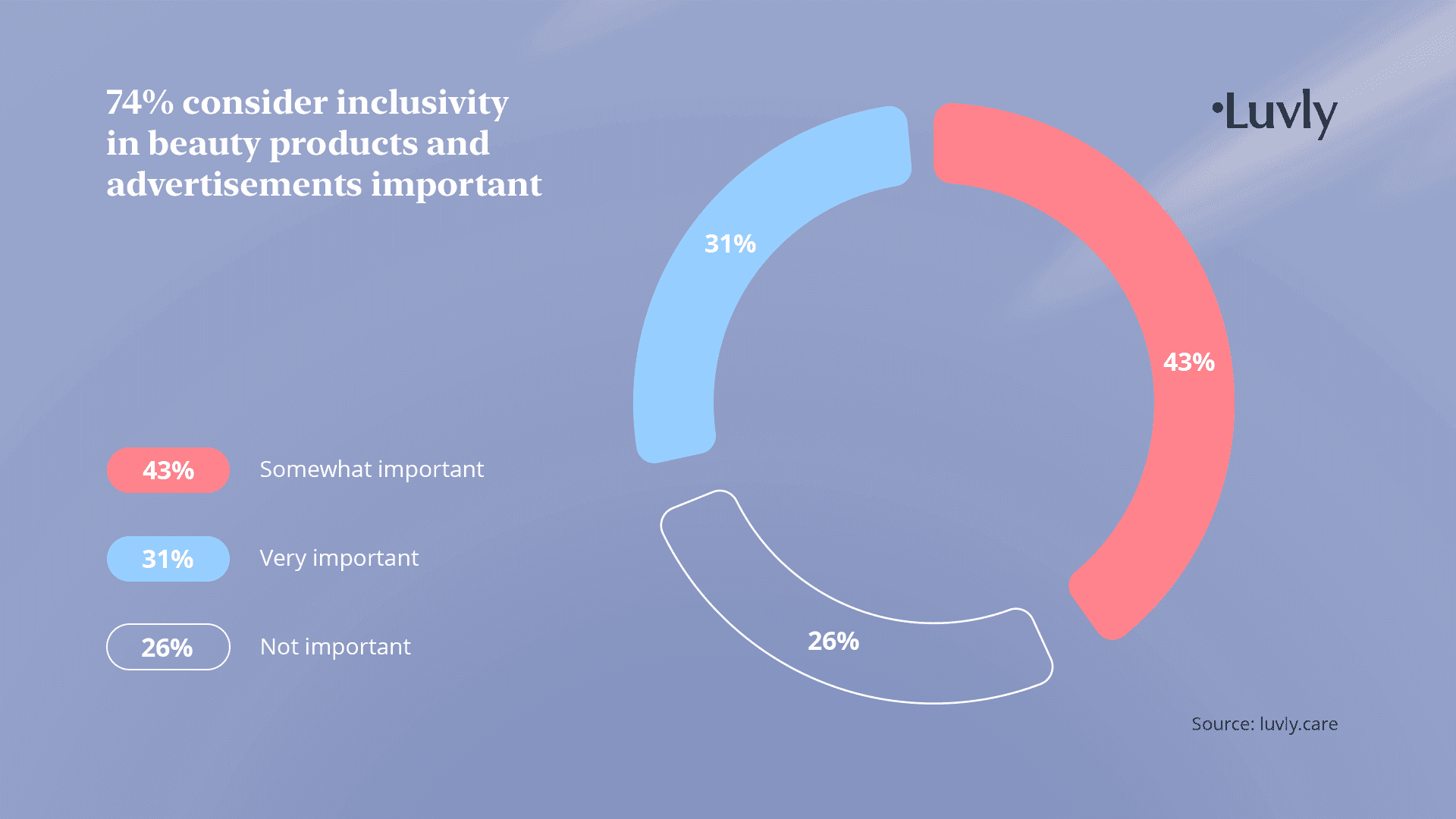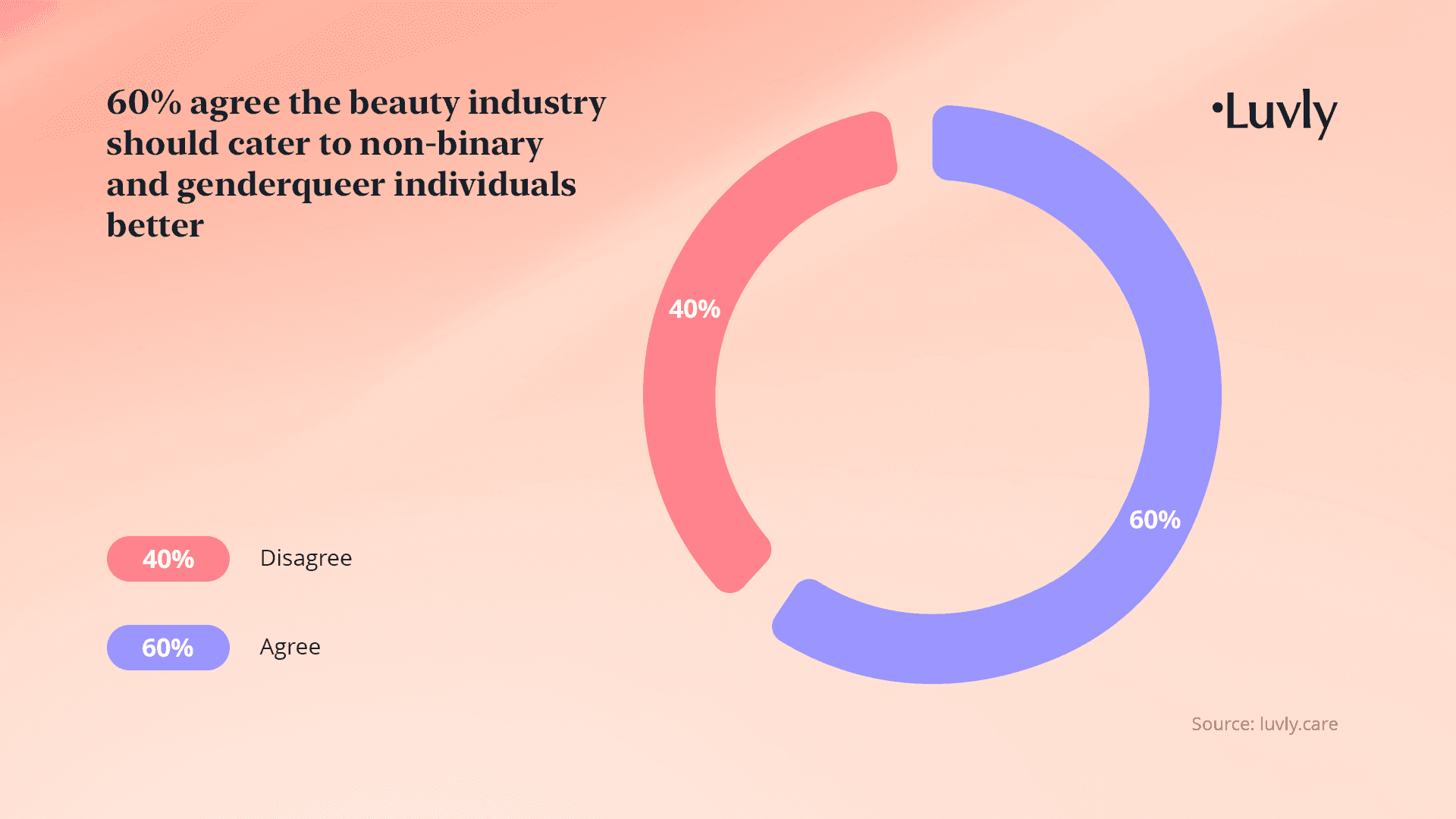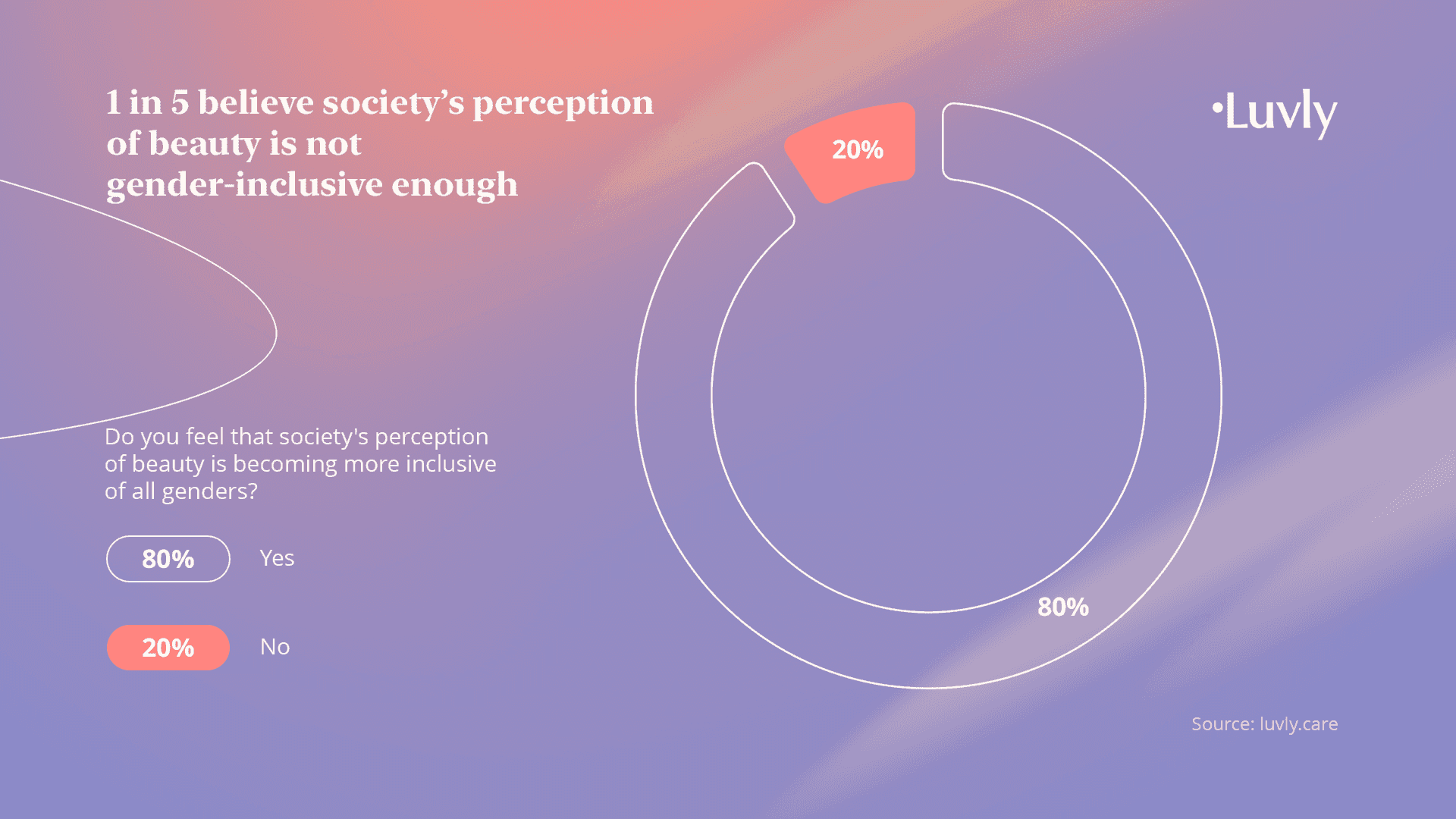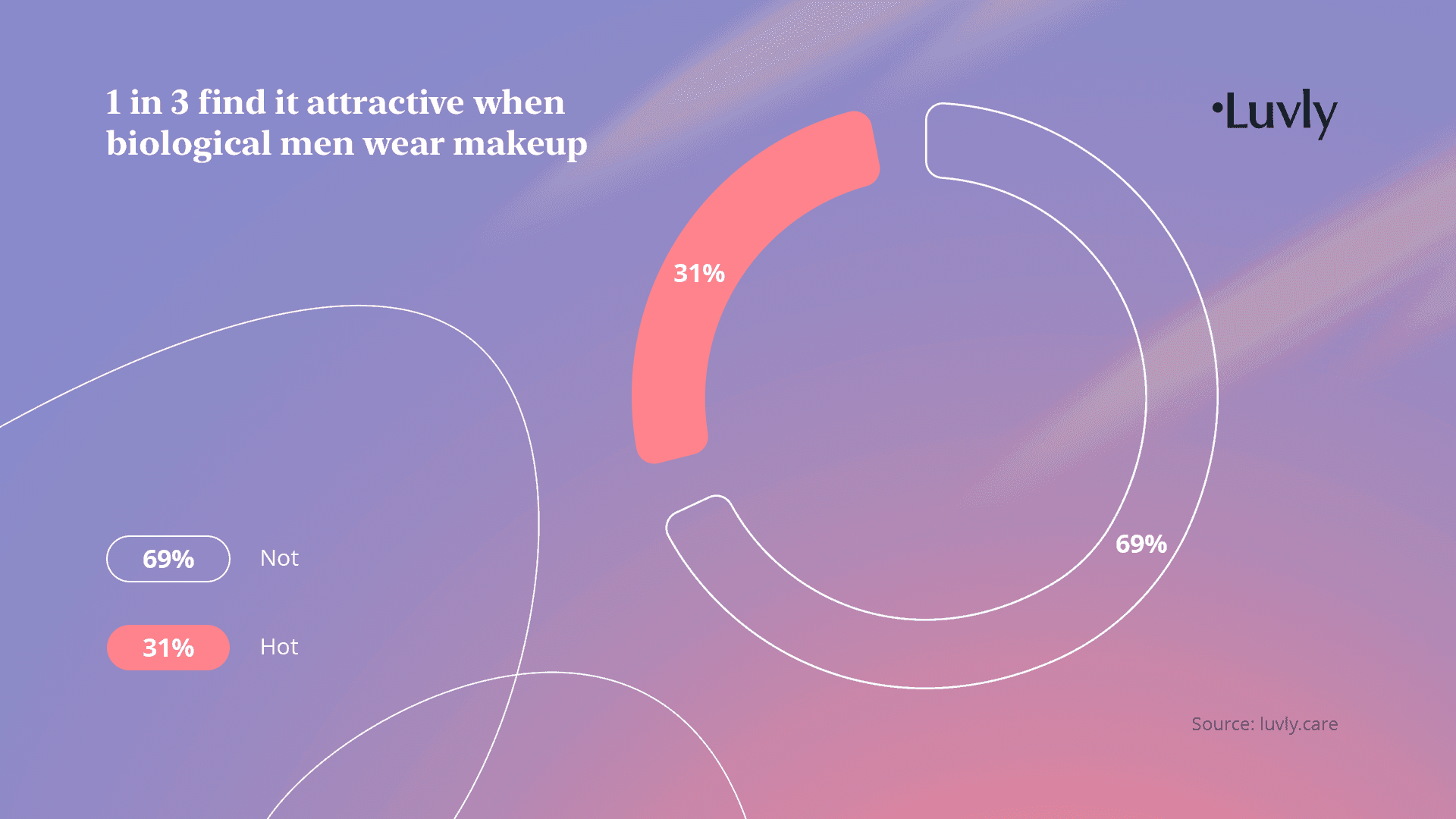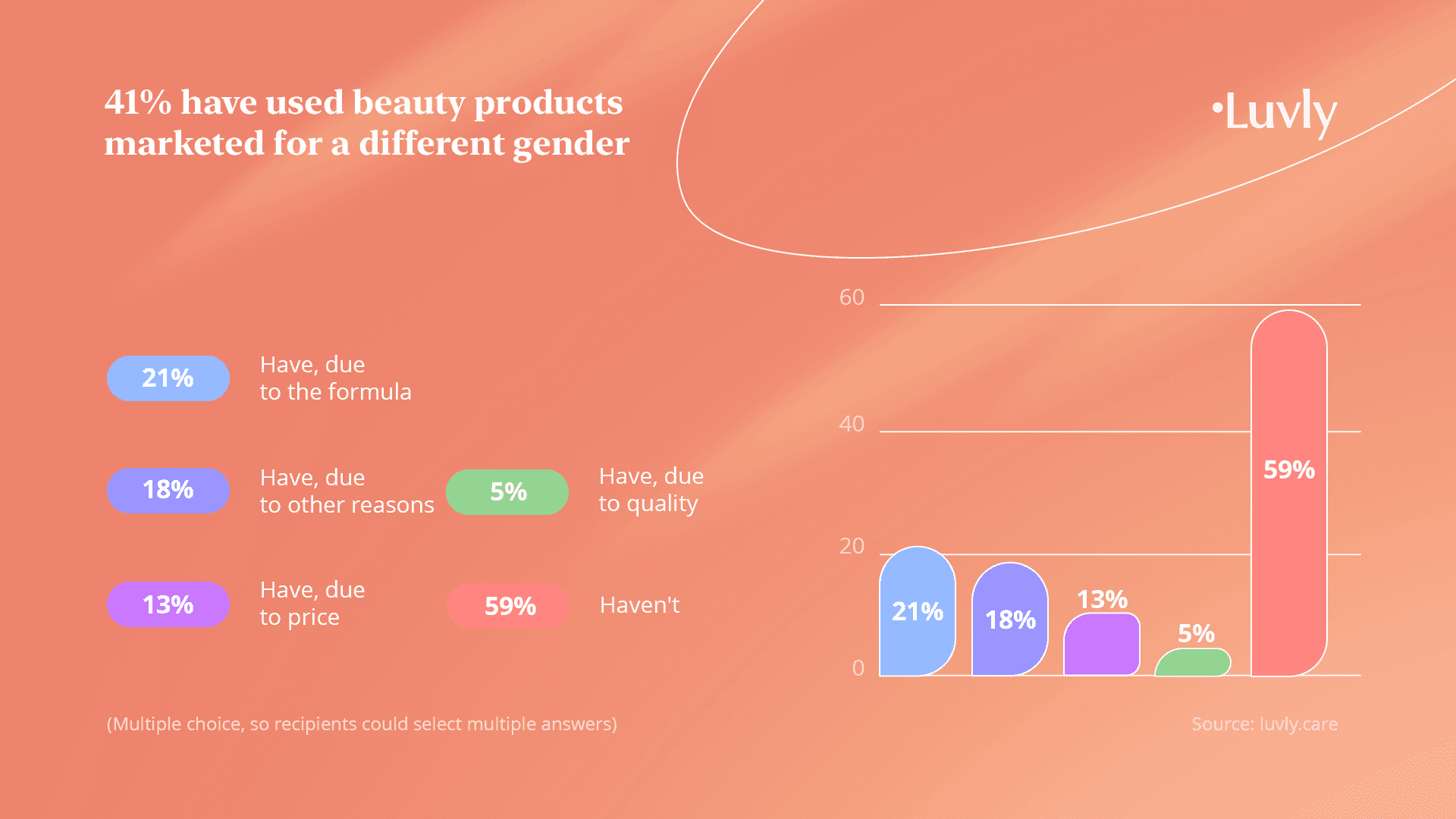Face Yoga
Pink, Blue, and Everything in Between: Overcoming Beauty’s Gender Stereotypes
Written by Valeria ZhyvotovaUpdated on 30 May 2025
Face Yoga
Pink, Blue, and Everything in Between: Overcoming Beauty’s Gender Stereotypes
Written by Valeria Zhyvotova.Updated at 30 May 2025
Key findings:
- Some 23% of people admit that rigid gender norms discourage them from looking the way they want.
- However, there are positive signs that society is becoming more willing to embrace gender neutrality with 41% having used a beauty product marketed for a different gender.
- The beauty industry is also doing its part to promote inclusivity. However, 75% of consumers believe this practice is driven by profit, rather than a desire to do the right thing.
- Some 44% want to see greater representation for gender-neutral beauty in the media and 60% want the beauty industry to cater to non-binary and genderqueer consumers better.
Beyond labels: Breaking free from gender beauty stereotypes
The beauty industry has always been so rigid in its portrayal of gendered beauty norms: men with chiseled jaws, muscular physiques, and a rugged appearance, and women with petite frames, long hair, and glowing skin. So eager to conform to these strict stereotypes, 23% of people shy away from looking and dressing the way they truly desire.
It isn’t just the beauty industry that’s guilty of ignoring gender neutrality. Some 77% of people also believe that the media fails to adequately represent the fact that beauty isn’t binary, and 44% of people demand that it be addressed. Beauty is genderless and it’s society that should be forced to change its thinking, not us.
The pink tax: How the beauty industry profits off gendered products
Over the years, beauty companies have learned that women are willing to pay more for products that keep their skin healthy and appearance radiant. While 91% of people agree that it’s an unfair practice, it’s no wonder that the industry has been resistant to change. How will these businesses continue to charge particular demographics more if everyone is using the same gender-neutral products?
It isn’t just beauty products that come with an added pink tax. Consider haircuts too, which can cost double or even triple the price for women when compared to male grooming—and there’s no discount for women with short hair. A clear sign of exploitation, 89% of people agree this practice is unfair.
But today, indistinct packaging that doesn’t attempt to grab the attention of one particular gender is beginning to find its place on store shelves. With gender-neutral a top trend in the beauty industry, surely gender-discriminatory pricing practices will soon be a thing of the past? Some 67% of people aren’t so sure.
But consumers aren’t convinced that brands are embracing gender neutrality out of the kindness of their hearts, but rather for the benefit of their stakeholders. Some 75% of people feel that the industry is only opening its arms to a broader spectrum of identities and ditching outdated gender norms not because inclusivity is morally right, but because there’s money to be made.
The face of change: Is the beauty industry doing enough to be inclusive?
For 74% of people, a lack of inclusivity in beauty product advertising is a big part of the problem. We’re been taught to believe that feminine-looking products are solely for women and masculine- or neutral-looking products are exclusively for men—even when the ingredients listed on the back of the bottle are entirely the same.
We’re starting to see male influencers in makeup advertisements and trans models starring in mainstream campaigns. Whether driven by profit or ethics, blurring the boundaries between products for not just men and women, but the vast spectrum of gender identities is a step in the right direction for the beauty industry. However, for 60% of people, the beauty industry still needs to do more to show it truly believes that gender is fluid, and cater to its non-binary and genderqueer customers.
Redefining beauty: Is society starting to embrace gender neutrality?
For 20% of people, there’s still work to do before everyone can feel comfortable in their own skin and stop trying to live up to gender-based expectations. The good news? With 80% of people agreeing that society’s perception of beauty is becoming more inclusive, there are positive signs that the world is finally getting over its obsession with conformity.
Whereas in the past makeup was almost exclusively worn by women, today it’s fairly common to see men with their nails painted or wearing eye shadow. Where once they would have faced ridicule and judgment, in the modern day, they’re more likely to turn heads out of lust and attraction, given 31% of people find it hot when biological men wear makeup.
We’re breaking away from our gender stereotypes and a label on a bottle won’t stop us! Some 41% of people have used beauty products marketed for different gender, whether due to the formula, price, or quality. If it’s what we like, why should our gender determine whether we should or shouldn’t use it?
Beauty comes in all shapes, shades, and sizes—regardless of gender—so just be yourself! If a bottle catches your eye, smells good, and contains ingredients that are kind to your skin, don’t be afraid to use it just because the packaging says it's not for you.
Methodology: To create this study, Luvly surveyed 1,000 people aged over 18 years old with no focus on particular geographies, ethnicities, or social backgrounds.

